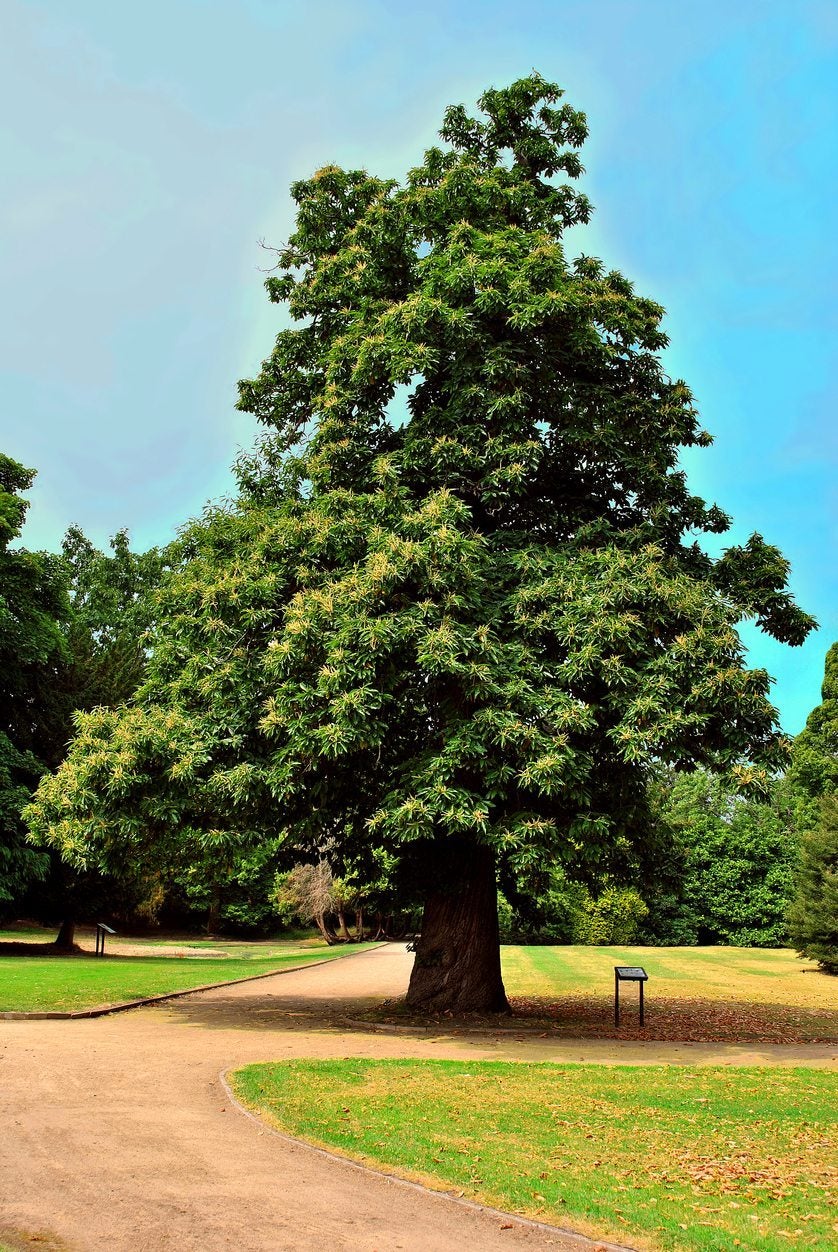European Chestnut Care: Tips For Growing Sweet Chestnut Trees


Many great forests of American chestnut trees died from chestnut blight, but their cousins across the seas, European chestnuts, continue to thrive. Beautiful shade trees in their own right, they produce most of the chestnuts Americans eat today. For more European chestnut information, including tips on how to grow a European chestnut, read on.
European Chestnut Information
European chestnut (Castanea sativa) is also called Spanish chestnut or sweet chestnut. This tall, deciduous tree belonging to the beech family can grow to 100 feet (30.5 m.) tall. Despite the common name, European chestnut trees are not native to Europe but to western Asia. Today, however, European chestnut trees thrive throughout much of Europe as well as northern Africa. According to European chestnut information, humans have been growing sweet chestnut trees for their starchy nuts for centuries. The trees were introduced in England, for example, during the time of the Roman Empire. European chestnut trees have dark green leaves that are slightly furry. The underside is a lighter shade of green. In the fall, the leaves turn canary yellow. Tiny, clustered flowers appear in male and female catkins in summer. Although each European chestnut tree has male and female flowers, they produce better nuts when more than one tree is planted.
How to Grow a European Chestnut
If you are wondering how to grow a European chestnut, keep in mind that these trees are also susceptible to chestnut blight. Many of the European chestnut trees cultivated in America died from the blight too. The wet summers in Europe make the blight less deadly. If you decide to start growing sweet chestnut despite the risk of blight, be sure you live in the right climate. The trees grow best in U.S. Department of Agriculture plant hardiness zones 5 through 7. They can shoot up 36 inches (1 m.) in one year and live up to 150 years. European chestnut care begins at planting. Select a large enough site for the mature tree. It can spread to 50 feet (15 m.) wide and twice that in height. These trees are flexible in their cultural needs. They grow in sun or partial shade, and will accept clay, loamy, or sandy soil. They also accept acidic or slightly alkaline soil.
Sign up for the Gardening Know How newsletter today and receive a free copy of our e-book "How to Grow Delicious Tomatoes".

Teo Spengler is a master gardener and a docent at the San Francisco Botanical Garden, where she hosts public tours. She has studied horticulture and written about nature, trees, plants, and gardening for more than two decades, following a career as an attorney and legal writer. Her extended family includes some 30 houseplants and hundreds of outdoor plants, including 250 trees, which are her main passion. Spengler currently splits her life between San Francisco and the French Basque Country, though she was raised in Alaska, giving her experience of gardening in a range of climates.